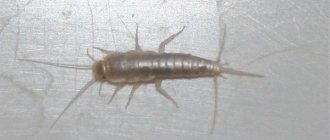This ointment can be purchased at any pharmacy for pennies. Also, do not forget to purchase a plaster from the pharmacist if the supplies in your home medicine cabinet are running low. Take a patch, apply a sufficient amount of ointment to its bactericidal part (the square in the middle), stick it to the place where the splinter has “settled” and after 12 hours, remove the patch. Rest assured, your splinter will already be on the patch!
The disadvantages of this method: the unpleasant smell and greasy consistency of the ointment itself, which is very difficult to wash off from clothes if it’s already dirty. This method is also better suited for getting rid of a splinter in the finger, because wearing an adhesive plaster, for example, on the heel for 12 hours in a row is completely inconvenient.
Well, how can you get a splinter out of your leg or other part of the body where it’s uncomfortable to wear a patch? In this situation, it is better to use a tool such as tweezers.
Can a splinter come out on its own?
Indeed, a splinter is a foreign body, so the body tries in every possible way to get rid of it. You need to remove it from under the skin yourself.
Adviсe:
- A needle or tweezers are often used for this. But it happens that the foreign body is embedded very deeply and it is very difficult to get to it on your own, especially if you do not perform any surgical procedures.
- Many people are afraid to use a needle to remove a shard of glass or wood shavings for fear that it will be unbearably painful when the needle pierces the skin. In fact, the painful sensations associated with an abscess are stronger than when removing a splinter.
- Accordingly, there is no need to worry. If you cannot remove it yourself, it is best to consult a doctor who will help you remove it surgically.
- Yes, indeed, it happens that a foreign body leaves the body on its own. When the skin comes into contact with a splinter, it swells, and a large number of leukocytes come to this place, which try to remove the foreign body. Accordingly, pus appears.
- When the abscess breaks, the pus comes out along with the infiltrate, and the splinter leaves the body along with the liquid. But this takes time, so the place of the abscess hurts very much and swells. It is especially dangerous if a glass or metal splinter enters the body.
- The fact is that glass can additionally cut the upper layers of the epidermis, even if you have removed the splinter. Often a piece of glass is broken with tweezers and a large number of fragments are obtained, which further harm the body.
- We do not recommend removing glass splinters yourself. It is advisable to use tweezers with rubber tips to avoid crushing the glass. This kind of splinter is removed with the help of a doctor.
- If it is a metal splinter, then under the influence of moisture under the skin it begins to rust, which causes an abscess and also contamination. This is why glass and metal splinters are more dangerous than wood shavings, which do not crumble and do not corrode when exposed to moisture.
Splinter in the finger
Features of a splinter in the heel
The skin on the feet is quite rough, but when walking barefoot, and also due to anatomical features, when the body weight rests on the foot, the splinter can become firmly embedded in the soft tissues. Its penetration is often accompanied by pain, swelling or slight bleeding.
Standard foreign object extraction techniques are difficult to apply in this area. The neglected condition is especially dangerous for those suffering from immunodeficiency, diabetics, the elderly and children.
What happens if you don’t pull out the splinter in time?
We recommend not to wait for the splinter to come out on its own, because this is associated with the appearance of an abscess. It often happens that swelling develops in this place and pus accumulates.
Consequences:
- Blood poisoning. This happens if a foreign body gets under the skin on the leg. The fact is that when walking, such a splinter sinks into the skin even deeper, and it is almost impossible to get it out on your own. In this case, unbearable pain occurs, since with each pressure on the leg the splinter sinks deeper, striking and tearing deep tissues
- Swelling, abscess, sepsis occurs
- Tetanus
- In severe cases, gangrene develops
- Even such a seemingly small nuisance as a splinter can cause the development of a serious illness that requires urgent hospitalization and treatment.
Splinter on the hand
Recipes for lotions, pastes and ointments
How can you eliminate the problem at home? Various methods are recommended, which include the use of pastes and ointments, various compresses on the wound.
If you don’t know how to remove a splinter from your heel, you can make a simple solution from salt by diluting a large spoonful of the product in 0.5 liters of boiling water. The foot is soaked for about half an hour until the skin becomes wrinkled. At the end of the procedure, as a rule, the edge of the object is visible.
It is also possible to use soda paste, especially when there is a fungal infection. How to get it? You need to dilute baking soda with water to a thick consistency and apply it to the affected area. After half an hour, rinse with water and remove the contents on the heel.
From pastes, finely chopped comfrey root poured with boiling water can also help. The resulting mixture is lubricated on the heel and thus softens the skin.
An excellent softening agent that has an antiseptic, anti-purulent effect - tar, Vishnevsky ointment. Thanks to these drugs, the skin will quickly soften and pus will come out. If the object penetrates deeply, you need to lubricate a napkin with ointment and fix it on the wound. After 2 hours, the heel is washed with water.
How to fix the problem using a thermal bath? You will need to dilute 100 grams of salt in 400 ml of water, then quickly lower it and remove the sore area. This must be done until the solution has completely cooled. After steaming the area, you can use Vishnevsky ointment.
Sometimes, as an option, a bath of diluted baby soap helps. For 400 ml of water you will need 100 grams of soap. The limb is soaked for about half an hour.
Compress
To remove a foreign object from the heel, you can apply a compress, finely chop the onion, and secure the mass with a bandage. Thanks to natural phytoncides, the wound site will be disinfected and the skin will become soft.
If there is no salt or baby soap, as an option, grated onion and soap, combined to form a paste, can be applied to the affected area. The mass is applied to the sore foot before bed and covered with polyethylene. In the morning, the compress is removed, and the skin around the wound becomes softer.
If the object has not left the heel, what can be done to prevent suppuration? An assistant can be ordinary cottage cheese, which is applied to the sore spot. Over time, a positive effect can be observed.
What to do if you were unable to remove the splinter yourself?
In this case, try applying a bandage with ichthyol ointment or Vishnevsky ointment to the surface. You must wait overnight; if the splinter does not come out on its own by the morning, or a swelling or abscess has developed, we recommend that you consult a doctor and do not self-medicate.
The most interesting thing is that even after removing the splinter, pieces of a foreign body may remain under the skin. And if it is glass, then its fragments after removal may also remain in the skin. The painful sensations should disappear after some time. The swelling also disappears and there will be no discomfort at the site of the splinter.
The skin is normal, there is no temperature, there is no swelling. We recommend that after you remove a piece of glass or metal from your finger or foot, lubricate the affected area with an antiseptic. Levomekol or Miramistin, Chlorhexidine will do. You can also use regular alcohol or brilliant green.
Can't remove splinter
What you should pay attention to? If, after removing the foreign body, an abscess still continues to develop, the affected area heats up, swells, and becomes red, perhaps you did not remove the remains of the foreign body, there are fragments or small particles. In this case, we recommend making a compress with a pulling ointment. Vishnevsky is suitable, after application you need to wait a day. If swelling and an abscess with pus develops during this time, we recommend that you consult a doctor. Most likely, the wound got infected or you did not remove the splinter.
If you are unable to remove the splinter on your own, there are several good ways to help move it closer to the surface of the skin and remove it smoothly.
Instructions:
- Mix a teaspoon of baking soda with a teaspoon of water. It is necessary to get a viscous paste. Apply this mixture to the area where the splinter is located.
- Cover with a band-aid and leave overnight, rinse off after sleep
- You will notice that the splinter actually stretches out and is much closer to the surface of the skin. Now it can be easily removed using a needle or tweezers.
- Ichthyol ointment or Vishnevsky ointment works in exactly the same way. They also help draw the splinter to the surface
Removing the splinter
If swelling and an abscess with pus develops, we recommend consulting a doctor. Most likely, the wound became infected or you did not completely remove the splinter.
Preparing for removal
Before removing a foreign body from the foot, you need to calm down and pull yourself together. It is important to do everything quickly and clearly.
If a child has a splinter, he needs to be distracted, calmed down, given a toy or sweets, and explained that it won’t hurt, but the stuck thorn needs to be removed. You can distract your child from manipulations with cartoons. The main thing is that the child is not afraid and does not flinch at the most crucial moment.
Inspection
To understand where the splinter is, an inspection is carried out using a magnifying glass, you can use simple glasses. The lighting should be bright and clearly outline the damaged area.
It is important to understand exactly where, how deep and at what angle the fragment is stuck . This information allows you to determine what to do and how to quickly and accurately remove the spike.
Cleaning and disinfection
The foot is washed thoroughly with soap. If the splinter is wooden, it is not recommended to keep your feet in water for a long time: the splinter will swell and split under the influence of the liquid, and in this case it will become almost impossible to get it out.
It is necessary to wash your hands with soap and water to avoid introducing infection into the wound. Despite the non-seriousness of the injury, hygiene rules must be strictly followed.
If a hard fragment is stuck deep in the epidermis and is not visible, the heel is first cleaned with pumice to soften and remove the upper stratum corneum.
Clean feet are treated with an antiseptic. If there are no special products at hand, any alcohol-containing substance will do.
Preparing tools
At home, a splinter is removed using improvised means: a needle, a pin, a syringe. Before use, these items are boiled for 15 minutes and treated with an antiseptic . This must be done to avoid infection.
What is required for extraction?
It doesn't matter how deep the splinter is stuck in the tissue. It requires caution and asepsis.
To extract you will need:
- Provide yourself with good lighting.
- Tweezers or a regular sewing needle.
- Alcohol (vodka) for antiseptic treatment of devices.
- Several cotton pads. Pieces of clean fabric and a scarf are also suitable.
- Hydrogen peroxide to treat damaged skin.
- Zelenka or iodine.
Reasons to see a doctor
In some cases, when a foreign object gets under the skin, the help of a specialist is required:
- The splinter is large and has penetrated very deeply into the tissue.
- The removal attempt ended with the end broken off and further access impossible.
- The wound began to fester and tear.
- A thorn from a poisonous plant got under the skin.
- The extraction was successful, but the injury site turned red, festered, and swollen.
Steps to take before visiting the doctor
To make the specialist’s work easier, treat the wound with antiseptics more often. Steam the skin with warm salt water. But if you have already encountered complications in the form of suppuration, swelling, redness, thermal procedures are contraindicated. You can easily bandage the wound area to avoid additional damage along the way.











